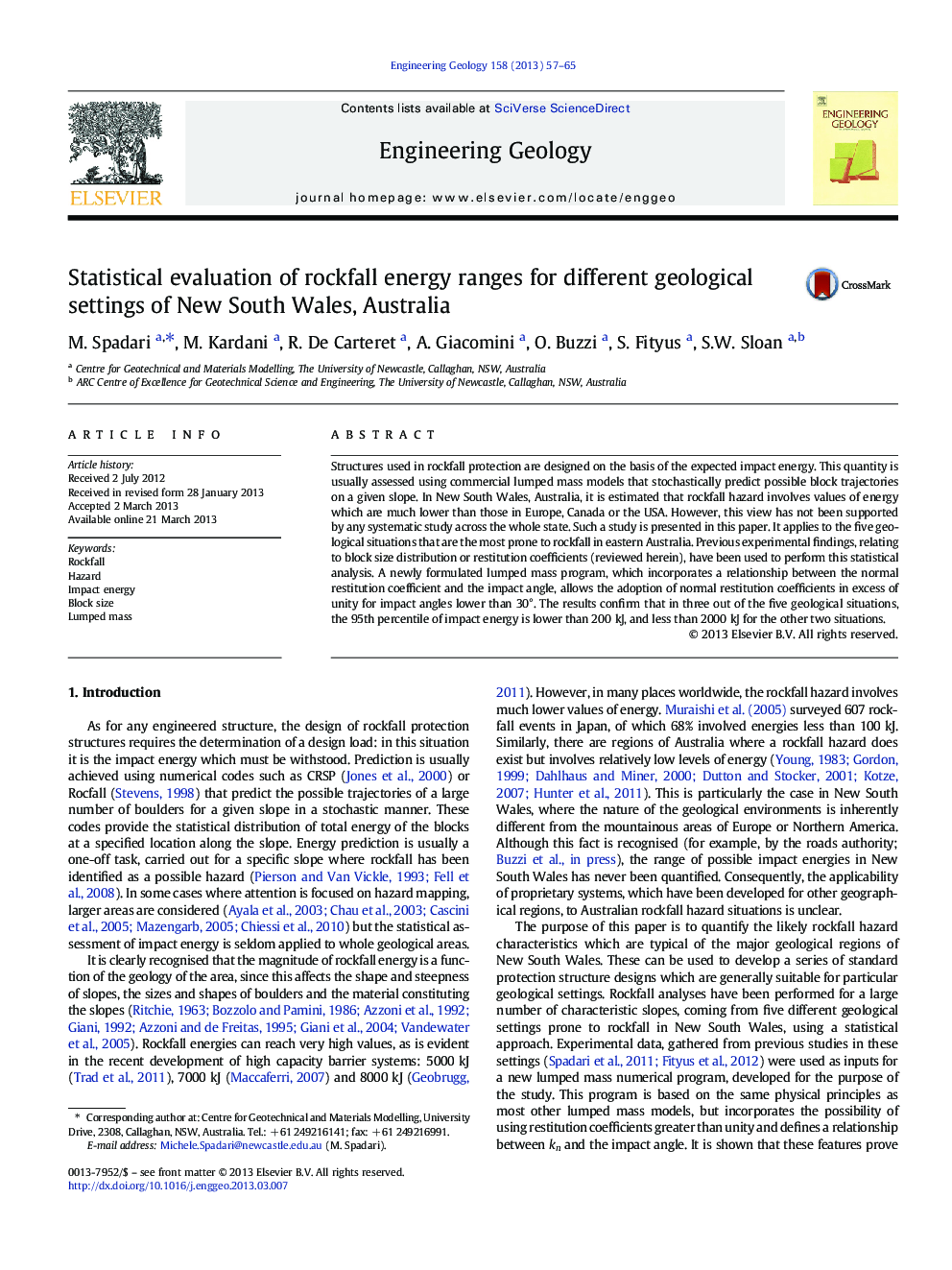| Article ID | Journal | Published Year | Pages | File Type |
|---|---|---|---|---|
| 4743718 | Engineering Geology | 2013 | 9 Pages |
•Rockfall features have been characterised for five geological situations in NSW.•A lumped mass program has been developed for rockfall simulations.•The program allows kn greater than 1 and a dependence of kn on the impact angle.•More than 200 representative slopes were analysed with a statistical approach.•Distributions of impact energy were established and rockfall hazard was assessed.
Structures used in rockfall protection are designed on the basis of the expected impact energy. This quantity is usually assessed using commercial lumped mass models that stochastically predict possible block trajectories on a given slope. In New South Wales, Australia, it is estimated that rockfall hazard involves values of energy which are much lower than those in Europe, Canada or the USA. However, this view has not been supported by any systematic study across the whole state. Such a study is presented in this paper. It applies to the five geological situations that are the most prone to rockfall in eastern Australia. Previous experimental findings, relating to block size distribution or restitution coefficients (reviewed herein), have been used to perform this statistical analysis. A newly formulated lumped mass program, which incorporates a relationship between the normal restitution coefficient and the impact angle, allows the adoption of normal restitution coefficients in excess of unity for impact angles lower than 30°. The results confirm that in three out of the five geological situations, the 95th percentile of impact energy is lower than 200 kJ, and less than 2000 kJ for the other two situations.
